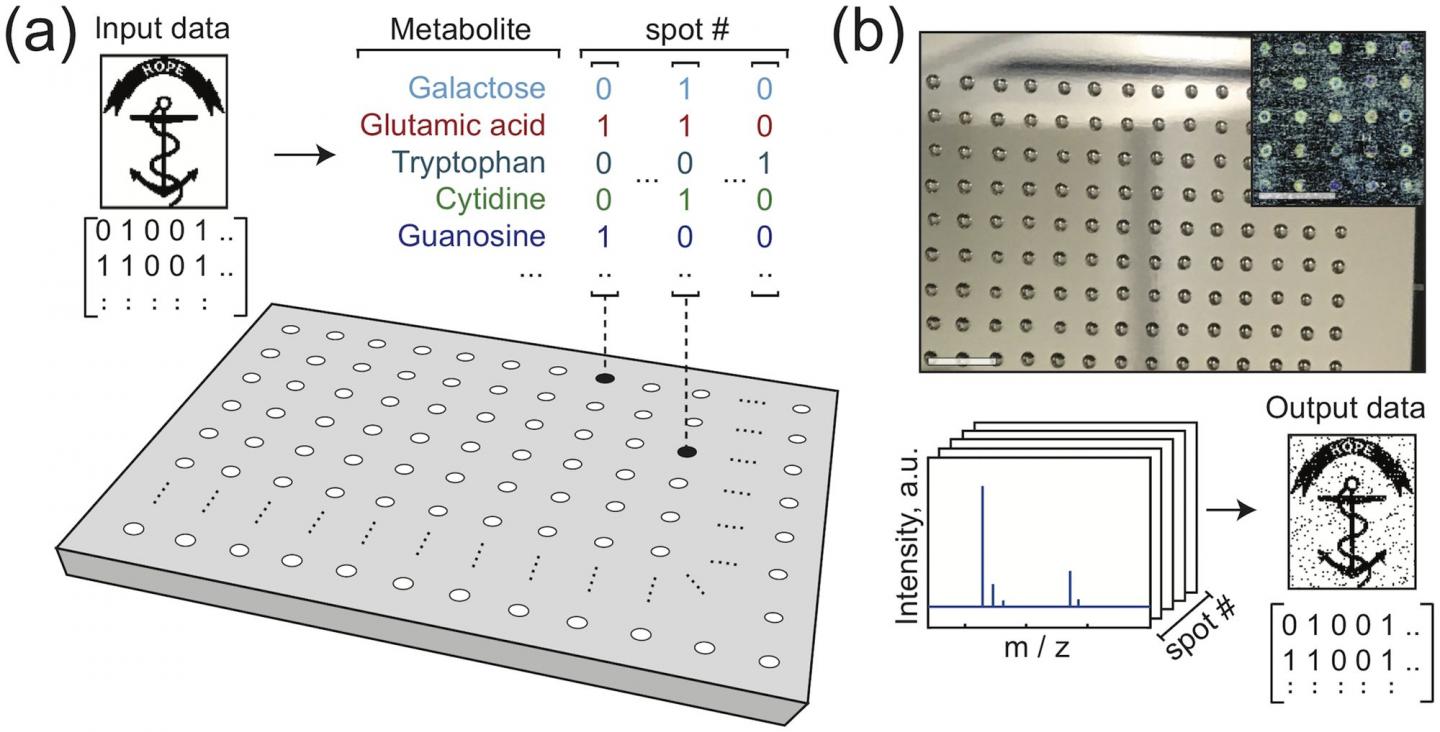Small molecules can encode data from an image and be read with over 98 percent accuracy

Writing and reading data encoded in mixtures of metabolites.
An anchor, an ibex and an Egyptian cat: all images that a research team from Brown University, led by Jacob Rosenstein, encoded and decoded from mixtures of small molecules called metabolites. They demonstrate the potential of this small-molecule information storage system in a new paper published July 3 in the open-access journal PLOS ONE.
Microchips have become the standard way for people to store data, such as a document on a home computer or a snapshot on a phone. Recently, scientists have experimented with ways to encode information using biomolecules, such as DNA, by synthesizing an artificial genome. In this new study, the researchers show that they can encode information using a different type of biomolecule, metabolites. They used liquid-handling robots to write digital information by dotting mixtures of metabolites into a grid on a surface. The locations and identities of the metabolites, when read by an instrument called a mass spectrometer, reported out binary data. Using this method, they could encode the information from a picture and then decode it to redraw the image with 98 to 99.5 percent accuracy.
Mixtures of metabolites, called metabolomes, offer many advantages over genomes for recording information. Metabolites are smaller, more diverse, and have the potential to store information at greater density. This proof-of-principle study shows that small-molecule information storage can successfully encode more than 100,000 bits of digital images into synthetic metabolomes. They expect that with additional development, the amount and density of information that can be encoded will grow significantly.
Rosenstein adds: “We encoded several small digital images into mixtures of metabolites, and read back the data by chemically analyzing the mixtures. A molecular hard drive or a chemical computer might still seem like science fiction, but biology shows us it is possible. We wanted to show in a mathematically precise way how to write and read digital data using some of the small molecules that our bodies use every day.”
###
Citation: Kennedy E, Arcadia CE, Geiser J, Weber PM, Rose C, Rubenstein BM, et al. (2019) Encoding information in synthetic metabolomes. PLoS ONE 14(7): e0217364. https:/
Funding: This research was supported by funding from the Defense Advanced Research Projects Agency (DARPA W911NF-18-2-0031) to BMR and JKR. The views, opinions and/or findings expressed are those of the authors and should not be interpreted as representing the official views or policies of the Department of Defense or the U.S. Government. The funders had no role in study design, data collection and analysis, decision to publish, or preparation of the manuscript.
Competing Interests: The authors have submitted a provisional patent application (62/791,504) related to this work.
In your coverage please use this URL to provide access to the freely available article in PLOS ONE: http://journals.
Media Contact
Jacob Rosenstein
[email protected]
Related Journal Article
http://dx.




